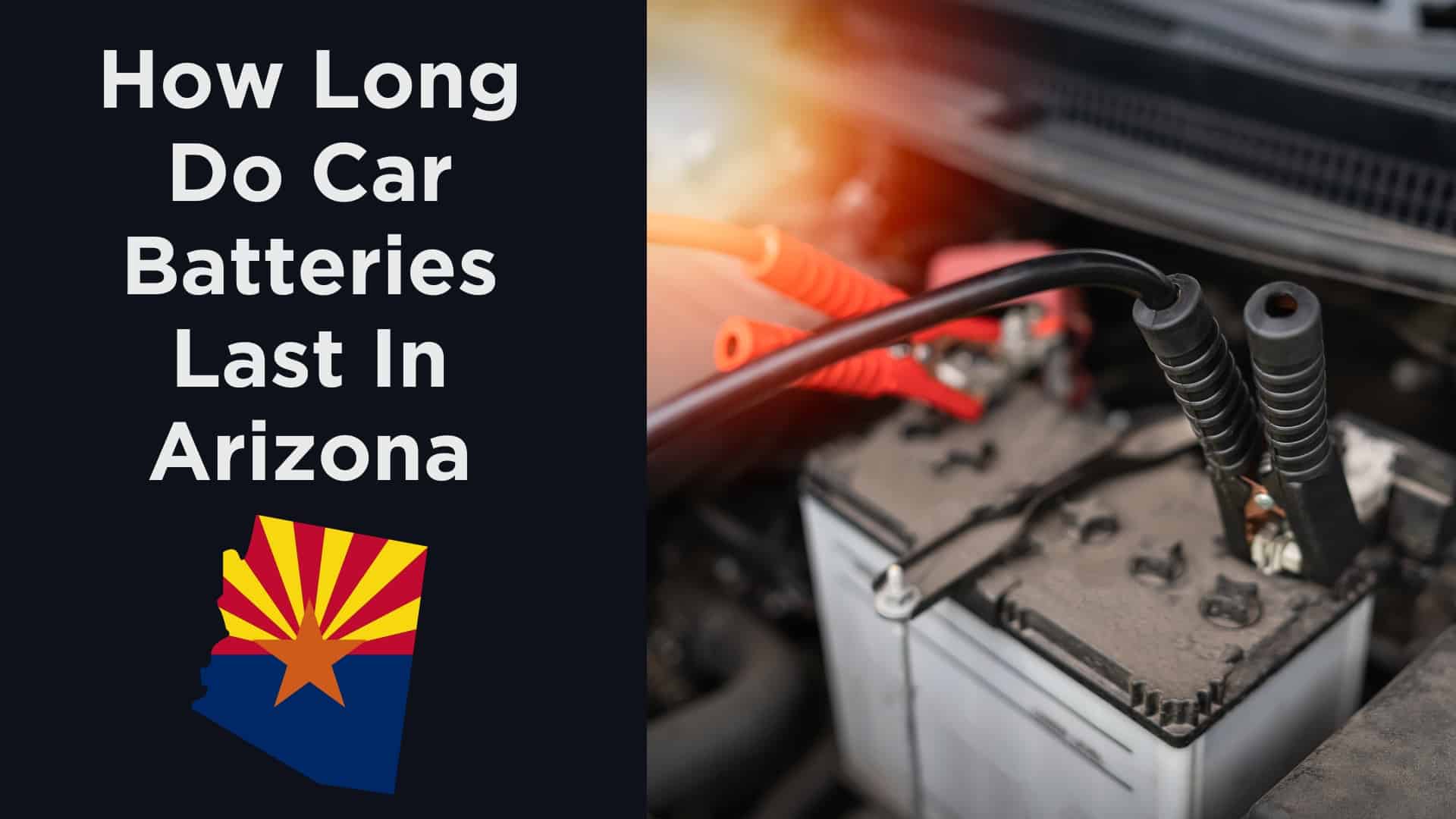How Long Does Car Battery Last In Arizona

Arizona, with its stunning desert landscapes and scorching summers, presents a unique challenge to automotive components, and car batteries are no exception. Understanding the lifespan of your car battery in this environment is crucial for avoiding unexpected breakdowns and maintaining vehicle reliability. This article delves into the factors affecting battery life in Arizona, offering insights for car owners, enthusiasts, and automotive professionals alike.
The Arizona Heat: A Battery's Nemesis
The primary factor dictating car battery longevity in Arizona is the extreme heat. While cold weather can temporarily reduce a battery's cranking power, prolonged exposure to high temperatures, particularly those exceeding 100°F (38°C), significantly accelerates battery degradation. This is due to increased internal corrosion and electrolyte evaporation. The electrolyte, a mixture of sulfuric acid and water, is vital for the electrochemical reactions that produce electricity. As it evaporates, the battery's ability to hold a charge diminishes.
Unlike colder climates where battery performance might dip temporarily, the damage inflicted by Arizona's heat is often permanent and cumulative. This means that even a relatively new battery can experience a shortened lifespan if consistently subjected to extreme temperatures.
Typical Battery Lifespan in Arizona
In most moderate climates, a car battery can last anywhere from 3 to 5 years. However, in Arizona, this lifespan is typically reduced to 2 to 3 years. Some batteries may even fail sooner, especially if they are of lower quality or poorly maintained.
Several factors can influence this range, including:
- Battery Type: AGM (Absorbent Glass Mat) batteries are generally more resistant to heat and vibration than traditional flooded lead-acid batteries. They are sealed, minimizing electrolyte loss, and often offer a longer lifespan, though they come at a higher price.
- Driving Habits: Frequent short trips prevent the battery from fully recharging, leading to sulfation (the formation of lead sulfate crystals on the battery plates), which reduces its capacity. Longer drives allow the alternator to properly replenish the battery's charge.
- Vehicle Electrical Load: Modern vehicles equipped with numerous electronic accessories (e.g., navigation systems, infotainment screens, heated seats) place a greater demand on the battery. Leaving lights on or accessories running while the engine is off will also drain the battery and shorten its life.
- Maintenance: Regular battery terminal cleaning to remove corrosion and periodic battery testing can help identify potential issues early on.
Recognizing the Signs of Battery Failure
Being aware of the warning signs of a failing battery is crucial for preventing unexpected breakdowns. Common indicators include:
- Slow Engine Cranking: The engine takes longer than usual to start.
- Dim Headlights: Headlights appear noticeably dimmer than normal, especially when the engine is idling.
- Check Engine Light: While the check engine light can indicate various issues, it could also be triggered by a low battery voltage.
- Corrosion on Battery Terminals: White or bluish-green deposits on the battery terminals indicate corrosion, which can impede electrical flow.
- Swollen Battery Case: In extreme cases, the battery case may swell or bulge due to internal pressure buildup caused by heat and chemical reactions.
Proactive Battery Care in the Desert
While the Arizona heat presents a challenge, there are steps you can take to extend your car battery's life:
- Park in the Shade: Whenever possible, park your vehicle in shaded areas or garages to reduce heat exposure.
- Use a Battery Tender: A battery tender (also known as a trickle charger) can help maintain the battery's optimal charge level, especially if you don't drive your car frequently.
- Regular Battery Testing: Have your battery tested regularly (at least twice a year) by a qualified mechanic. This can identify weak batteries before they fail completely.
- Choose a Quality Battery: Invest in a high-quality battery designed for hot climates, such as an AGM battery.
- Minimize Electrical Load: Avoid leaving lights or accessories on when the engine is off.
- Clean Battery Terminals: Regularly clean the battery terminals with a mixture of baking soda and water to remove corrosion.
The Role of the Charging System
It's important to remember that the car battery and the charging system (primarily the alternator) work together. A malfunctioning alternator can overcharge or undercharge the battery, both of which can shorten its lifespan. Regular maintenance of the charging system is essential to ensure the battery is receiving the proper voltage.
Consider having the charging system tested along with the battery to identify any potential issues.
Conclusion
While the Arizona climate poses a significant challenge to car battery longevity, understanding the factors that influence battery life and implementing proactive maintenance measures can help you extend the lifespan of your battery and avoid unexpected breakdowns. Choosing the right type of battery, minimizing heat exposure, and maintaining a healthy charging system are key to keeping your vehicle running reliably in the Arizona heat.
